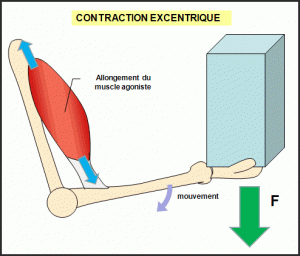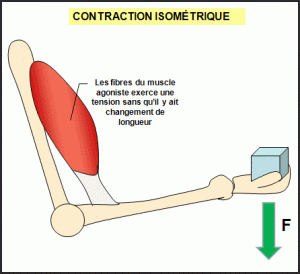Human beings and animals have three types of muscles.
We can distinguish skeletal muscles, smooth muscles and heart muscles. These muscles can be differentiated by their composition (fibers, proteins, etc.), their location or even their functions. Thus the heart muscles are those which form the walls of the heart while the smooth muscles form the walls of hollow organs like the bladder, stomach, etc. Smooth muscles and heart muscles are called involuntary muscles. This designation comes from the fact that these muscles are not consciously controlled by the brain.
The voluntary muscles we have are the skeletal muscles. They are the ones who allow us to make movements. They interact with the bones through the tendons to activate the various joints of the body. Although we control much of the movement that skeletal muscles can make, there are some adjustment movements that are completely involuntary. How do our skeletal muscles work?
What are our muscles made of?

What are the different types of muscle contractions?
In our different daily movements, we adopt postures that cause our muscles to have various reactions. Our muscles react differently depending on the movement of the body. There are three basic types of movement that muscles can perform. These movements are called muscle contractions. We distinguish :
Concentric muscle contraction
The concentric contraction is one in which muscles shorten under the action of myosin and actin. For example, the contraction that occurs on your biceps when you flex your arm is a concentric contraction. This contraction is said to be positive and is part of the isotonic contractions.
Eccentric muscle contraction
Still called negative contraction, this second type of isotonic contraction is in a way opposed to concentric contraction. During an eccentric contraction, the ends of the muscle move away. This contraction occurs in a situation where the effort requires that the muscle is in its longest form. A contraction is said to be eccentric when you apply a force to an object while having the muscle responsible for tense effort.
Isometric muscle contraction
Isometric contraction is a contraction that characterizes the static state of a muscle subjected to an effort. In this type of contraction, the muscle sought does not change in size. It is a muscle contraction that can take effect after a concentric or eccentric contraction.
What impact can muscle functioning have on bodybuilding exercises?
You are probably wondering how you can control the functioning of muscles. The functioning of skeletal muscles is a very important concept to know. This concept will allow you to choose the best exercises that match your goals.
So, if your goal is to increase your strength, you should prioritize exercises that cause isometric and eccentric contractions. Eccentric contraction, for example, has the advantage of working a large number of muscles, particularly those that are not often used. You still need to combine these exercises with other exercises to give more flexibility to your muscles. Because repeated isometric contractions will tend to reduce the speed of contraction of the muscles concerned. The downside with eccentric contraction is the fact that it requires too heavy loads. So be aware that these types of contractions increase the risk of injury. It would therefore be wise not to push the muscles too much.
On the other hand if your objective is to gain muscle mass, concentric contraction is your best asset. You should give priority to exercises characterized by positive contraction. This contraction is most useful in muscle development. Exercises based on this contraction allow you to quickly increase the volume of muscle fibers. They also allow you to improve your endurance. Repeating the exercises will determine how quickly your muscles will grow. The more you repeat, the more your muscle fibers will increase in volume.
Human beings are made of bones and pulp. The pulpit is essentially composed of muscle tissue. The muscles that we manage to control are the skeletal muscles. They allow us to walk, carry objects, laugh, talk, etc. it simply allows us to move. We have more than 600 striated muscles which are themselves composed of hundreds of thousands of muscle fibers. In their ways of moving, the muscles undergo three types of contraction, namely: concentric, eccentric and isometric contractions. It is important to know these different mechanisms to optimize these bodybuilding exercises. However, concentric contraction is the only one capable of providing intense muscle development and improved endurance. While eccentric and isometric contractions are more suitable for improving muscle strength.






